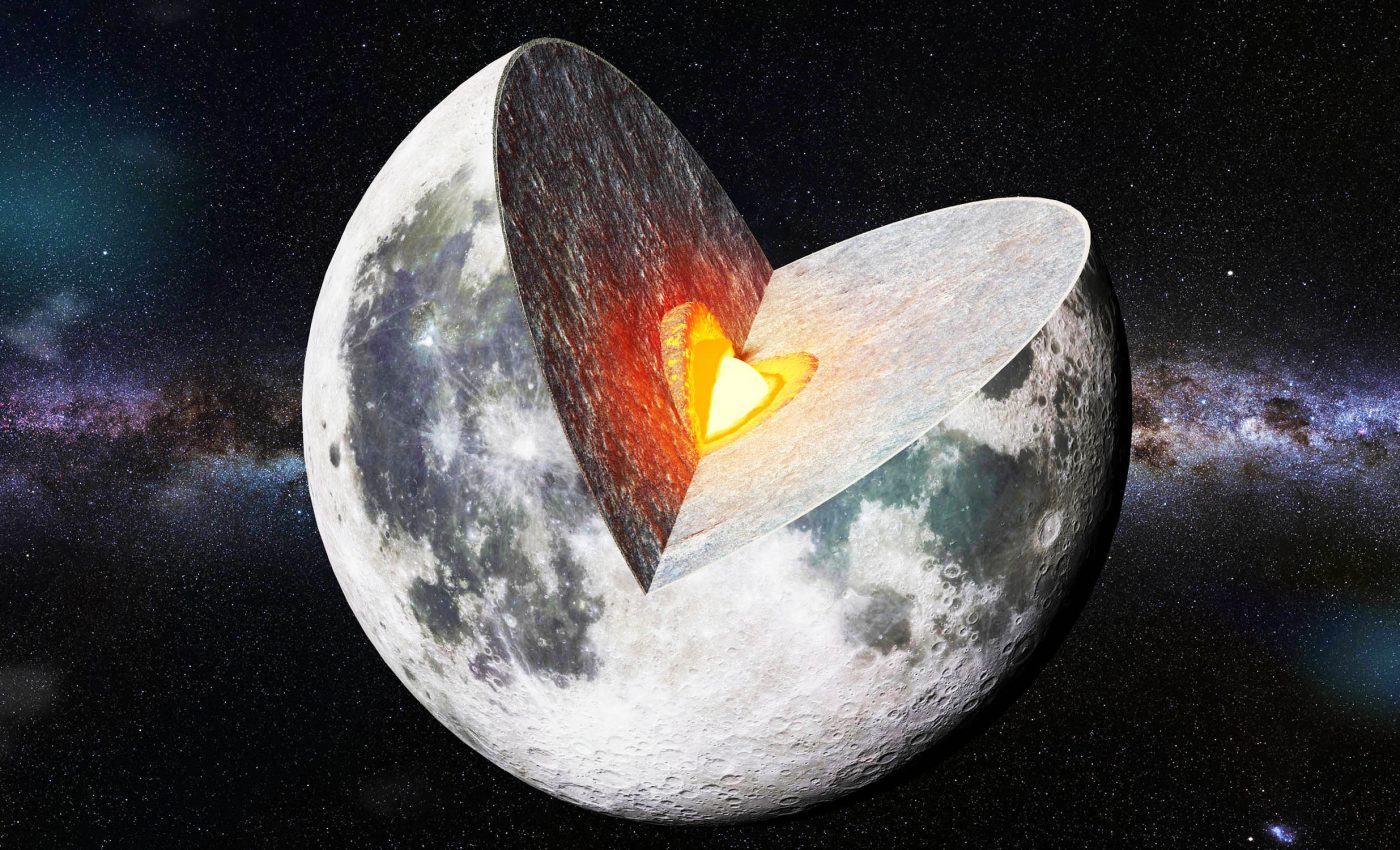
Discovery: Scientists finally learn what’s inside the Moon's core
For years, scientists have grappled with the intriguing question of whether the Moon’s inner core is solid or molten. This ongoing debate has sparked extensive research and discussion among experts worldwide.
Understanding the composition of the Moon’s core is not just vital for lunar science; it also offers critical insights into the formation and evolution of celestial bodies within our solar system.
Solving the Moon’s core mystery
Leading this exploration was Arthur Briaud, an acclaimed astronomer from the French National Centre for Scientific Research (CNRS).
The study’s findings exhibited that the Moon’s inner core is indeed solid, and its density is similar to that of iron. This breakthrough revelation could revolutionize our understanding of the Moon’s evolution and magnetic field.
“Our results question the evolution of the Moon’s magnetic field thanks to its demonstration of the existence of the inner core and support a global mantle overturn scenario that brings substantial insights on the timeline of the lunar bombardment in the first billion years of the Solar System,” said Briaud.
Exploring the Moon’s interior
Now, exploring the interior of celestial bodies like the Moon is no easy feat, especially when the data available is not particularly detailed.
Seismic data — think of it as the way sound waves behave when interacting with different materials — is typically how we study a planet or moon’s interior.
Briaud and his team combined this seismic data with information from space missions and lunar laser-ranging experiments to get around this obstacle.
They used this data to run simulations of the Moon’s core, leading to an interesting conclusion: the Moon’s mantle, the layer above the core, is actively overturning.
This means denser material is moving towards the center, while less dense material rises to the surface. This study, therefore, lends significant weight to this theory.
Moon’s core is very Earth-like
A key finding of this study is the remarkable similarity between the Moon’s core and that of Earth. Much like our planet, the Moon seems to have an outer fluid layer surrounding a solid inner core.
This intriguing resemblance prompts significant questions regarding the formation and evolution of both celestial bodies.
If the Moon’s core reflects that of the Earth, it indicates that both bodies may have been shaped by similar geological processes over billions of years.
The Moon’s magnetic past
The discovery of a solid inner core on the Moon holds profound implications for our understanding of its magnetic history.
Typically, magnetic fields are generated by the movement and convection of molten metal within a planetary core, producing electric currents.
This revelation challenges long-held assumptions, focusing on the mechanisms behind the gradual decline of the Moon’s magnetic field over time, as well as the interior cooling processes at play.
Implications for future Moon missions
Future lunar missions might help us collect new seismic data, potentially confirming Briaud’s findings. These missions could paint a clearer picture of the Moon’s interior and answer questions about its formation and evolution.
In this new era of lunar exploration, understanding the Moon’s internal structure is of utmost importance, not just for scientific knowledge but also for practical applications.
The more we know about the Moon’s internal structure, the better we can plan for long-term missions, whether for scientific research or establishing a human presence on the lunar surface.
Lunar exploration and the Moon’s core
To sum it up, the discovery of a solid inner core in the Moon is a key piece in figuring out its history and how it relates to Earth.
By confirming previous findings and uncovering new details about the Moon’s internal structure, Arthur Briaud and his team are helping us better understand how celestial bodies like the Moon and Earth go through similar processes in their formation and evolution.
The shared core composition between the Moon and Earth suggests they have a common history, giving us valuable hints about what shaped our Solar System billions of years ago.
As we gear up for future lunar missions, this new knowledge will be essential for guiding our exploration efforts. This research highlights the importance of continuing to explore the Moon’s mysteries, reminding us that even our closest celestial neighbor still has plenty to teach us.
—–
Researchers from the Université Côte d’Azur, Observatoire de la Côte d’Azur, and Observatoire de Paris, Sorbonne Université, contributed to this research.
The full study was published in the journal Nature.
—–
Like what you read? Subscribe to our newsletter for engaging articles, exclusive content, and the latest updates.
Check us out on EarthSnap, a free app brought to you by Eric Ralls and Earth.com.
—–













